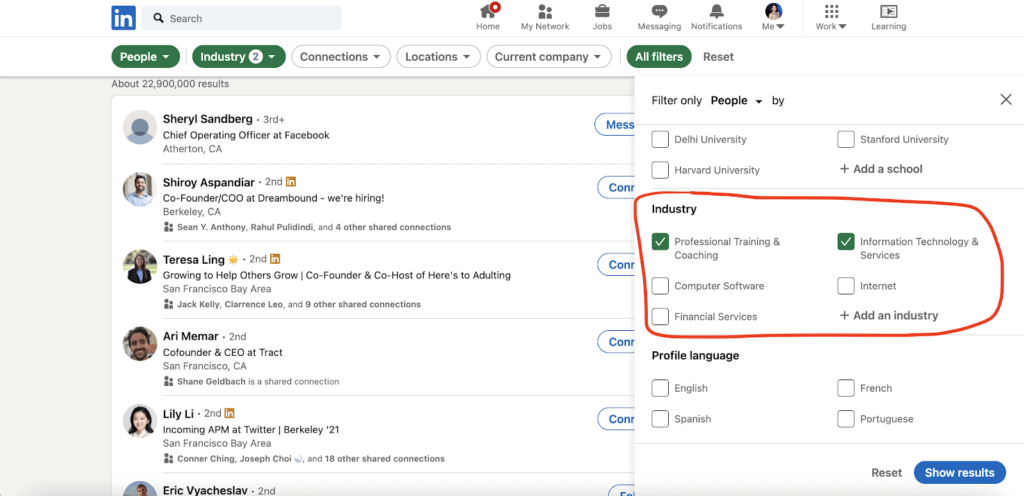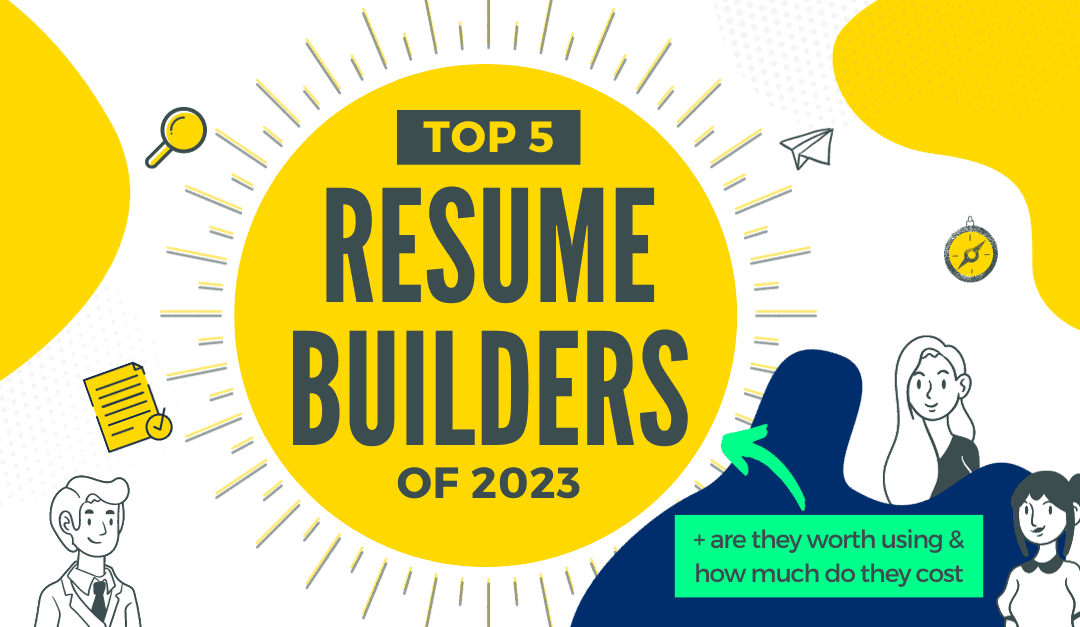How to Best Navigate a Career Pivot
Making a career pivot can be one of the most rewarding, yet difficult, things you can take on during your career. Regardless of why you’re considering a career pivot, congratulations! That’s not an easy conclusion to arrive at.
Now that you’re seriously considering a career pivot, it’s time to figure out how to succeed at making one. How are you going to show employers that you’re qualified for a new role? What about pivoting to a new industry? Let’s start with types of career pivots:
Role vs. Industry in a Career Pivot
There are two ways to make a career pivot: you can switch roles or you can switch industries. Which one you choose really depends on your preferences and circumstances.
Switching Roles
There are two ways I recommend switching roles. The first, and perhaps the easiest, is to switch roles within your current company. Here are some practical tips on switching roles within your company:
- Do your research. It’s important to be respectful of your company, so start by looking up their guidelines on switching roles within the organization. This shows you’re following due process and further emphasizes how conscientious you are. It also demonstrates that you really want to stay at this company, so much so that you preemptively looked up their guidelines.
- Start with your manager. No matter how excited you are, don’t blab to your whole team about your desire for a pivot. Consult your manager first. They need to feel included so they will work with you on this career pivot. They’re going to be the one who can help you most.
- Do not threaten to quit if you don’t get your way. Why would the company want to work with someone like that, let alone give you what you want? There’s a lot of process going on that you likely won’t be aware of. These things take time, so be patient.
If you’re unable to make a career pivot within your current company, don’t worry, there are other ways to make a change. The second way you can switch roles is by starting with some freelance work in your desired role. This gives you flexibility, allows you to build your skills, and lets you meet new people at different companies who may think of you if a full-time position opens up.
The first step in becoming a freelancer is building a portfolio. If you have previous examples of your work, you can either build a website for your work or simply create a PDF document. The upside to building a website is that many freelance jobs will credit you and link back to your site, which will help you generate more business.
On the other hand, if you don’t think you’ll be doing freelance work very long, it may be easier to just create a PDF portfolio that you can send out. Creating a PDF is a lot easier to do than make a website, so it may have you a lot of time.
Don’t have any past examples of your work?
That’s okay! Your best bet is emailing companies you’re interested in working for and offering your work for free.
I know what you’re thinking, “work for free!?” Don’t worry, you’ll only have to do this a handful of times and keep in mind that you’re doing this for your long-term goal, which is your career pivot. Ultimately, taking the time to produce a few samples for free will pay off in the end.
Once you’ve gotten a few samples for your portfolio, you can begin searching for paid clients. You can either cold email people or you can turn to freelance job boards. Be aware that you’ll often get paid below-market-wages on job boards, but it’s a lot harder to generate business without them. I advise doing both, at least when starting out.
Here are a few sites where you can find freelance work:
- Upwork
- Fiverr
- FlexJobs
- Indeed
- ServiceScape
Switching Industries
Switching industries may be easier or more challenging depending on the industry you’re switching from. This type of career pivot is easiest when you can readily demonstrate transferable skills - which we’ll discuss later.
Your first step to switch into a new industry should be to network with professionals. There are certain people out there who have done the career pivot you’re trying to do. It’s a good idea to speak with them about their career path since they can identify what worked well and what didn’t.
LinkedIn is a great tool to research people who have made career pivots. Search for professionals working in the role or industry you’re after, and especially look for ones who made a career pivot into their current role.
When you go into the search box on LinkedIn, specify two industries for the people in your search results: the industry you’re currently in and the one you want to be in. This should show you people who have been in both industries. Send them a brief message on LinkedIn stating who you are and that you’d love to connect.

It’s important to be honest here and let them know you’re just looking for advice, not a job offer. In your intro message, make sure that you explain that you’re looking to make a similar career pivot as they did. Some will be happy to talk about it, others won’t.
Identify Transferable Skills
Throughout your career you’ve amassed a skill set that’s proven useful in your current role or industry, called your functional skill set. These skills can be soft skills or technical ones. Soft skills include communication, leadership, team building, and critical thinking. Technical skills include data analytics, SEO, social media strategy, and blog writing.
In this video, Angie Callen, founder of Career Benders, explains how to identify the transferable skills for your career pivot:
No matter which skills you choose to highlight, you need to have evidence to back up your claims. Here are a few examples of career pivots:
Marketer → Data Analyst : If you’re in digital marketing and looked at audience engagement metrics on a month-over-month basis, causing you to change the trajectory of your marketing strategy, that’s data analytics!
Design → Marketing : Was there ever a time where you marketed your design services? What methods did you use (cold outreach, social media, website, etc.) and what were the data-driven results?
Sales → Customer Service : Think about how you were able to get prospects to trust you. Demonstrating your people skills and that you’re adept at talking with strangers bodes well for customer service.
But what if you have a skill gap?
That’s absolutely okay, and expected, when making a career pivot. What’s important is to identify situations where you lacked a skill needed on the job and were able to learn that skill quickly and apply it.
This proves to potential employers that you’re a fast learner, and not knowing something isn’t a reason not to hire you. Skills can be taught, character and grit can’t.
Stop Being Your Own Worst Critic
Career pivots are uncertain and difficult. At the end of the day, however, your own worst critic is usually yourself.
Americans today average 4.4 years in a job, with younger generations averaging just 2.5 years. You are not alone in considering a career pivot.
When it comes to beating imposter syndrome, here are some strategies to keep in mind:
1. To get good at something, you need to practice. This career pivot is going to take you out of your comfort zone, and you won’t know everything right away. This is a time to learn, grow, and expand your skill set. Soon enough, this new role or industry will be second nature.
2. Who cares what others are doing? While this is easy to say and so much harder to do, it’s important to practice silencing critical voices that are pitting you against others. The only person to compare yourself to is yourself.
3. Use positive affirmations. Research finds that attaching your name to positive affirmations about yourself actually changes self-perception. Start each day with a positive affirmation: “Caroline, you’re amazing, and you’re on the path that’s right for you.”
Acknowledge your critical voices and keep moving forward.
Switching into an entirely new role or industry feels daunting. That said, if you’ve identified it as the right thing to do for your personal and professional life, these first steps will help make the process easier.
-----
Author: Caroline Mameesh is a freelance writer and recent Cornell graduate with a passion for helping people navigate their careers. She loves to write about a variety of topics. When she isn't writing, she's coaching students and young professionals on careers in startups. To learn more, visit her website.
Read more resume, LinkedIn, and interview best practices on The GHYC Blog.
More from the blog:

Best Resume Builders of 2023 (Pros & Cons + Prices)
Modern resume builders use AI, ATS-friendly templates, and active recommendations to help you build your perfect resume faster than ever before. In this post we’ve rounded up the 5 best resume builders of 2023.
How to Beat the ATS in 25 Minutes | The Ultimate Guide
In this guide I’ll show you how to beat the ats (applicant tracking system), plus I’ll give you 2 ATS-friendly resume templates and a free tool to test if your resume is ATS-friendly.
Accelerate your career with a course!
Tired of waiting to hear back from hiring managers? Speed up your job search with one of our accelerated courses. Learn how to optimize your resume, improve your LinkedIn, and nail your interviews to get hired within weeks!
Bogdan Zlatkov is the Founder of GHYC and author of "The Ultimate Guide to Job Hunting", ranked #1 on Google. He has been featured in the Wall Street Journal, Fast Company, HR Dive, and more. At GHYC, Bogdan creates job search courses & tools by working with award-winning career coaches, best-selling authors, and Forbes-Council members. Prior to GHYC, Bogdan led the content programs at LinkedIn Learning.